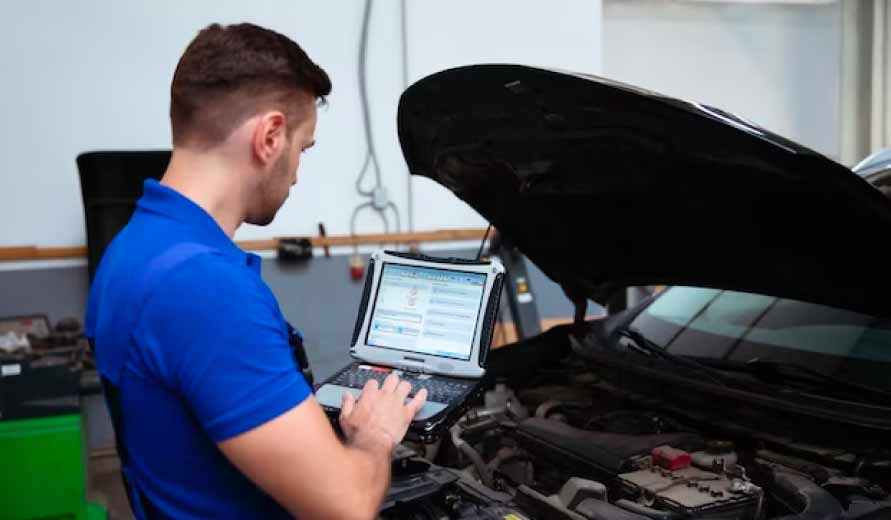- Barsha Heights - Dubai
- info@kharabcar.com
- +971 55 722 7700
How to Perform an Engine Compression Test on a Car?

How to Perform an Engine Compression Test on a Car?
An engine compression test on a car can be used to find pressure leaks, particularly ones that originate from valves, piston rings, and cylinders. Additionally, it might aid in locating a possible head gasket issue.
The finest aspect of a compression test is that the damaged engine doesn't have to be shut off. An engine compression test can be performed as shown below. Let's first define engine compression before moving on to the technique.
What Is Engine Compression In A Car?
When your engine is running, it creates pressure inside the cylinders, which is referred to as engine compression. The efficiency and power of your engine depend on how much pressure the engine creates and how well it transforms that pressure.
Engine Compression Test Procedure!
Here, we'll go over the specifics of how to run a compression test. Keep in mind that a compression test is a dynamic technique that can provide you with information about the general condition of an engine's mechanical parts. Good combustion is made possible by high compression ratios, which boosts engine performance.
A Car Compression Test Preparation!
When you warm up the engine for the compression test, remove the spark plug before you begin the procedure. Always use a fully charged battery while doing an engine compression test. You risk receiving inaccurate findings if the battery power declines during the test. Use a compression gauge that is appropriate for your engine.
Drive your car for a while to warm up the engine, and then let it idle for a while. This will enable the piston to correctly expand and seal and the valves to adjust securely. Open the hood after shutting off the engine. Locking the throttle open with a screwdriver will also ensure that the engine receives enough incoming air.
To stop fuel from entering the combustion engine, remove the fuel pump or fuel injection fuse. To find the fuse, consult the owner's manual. The fuse is under the hood of the car, either in the "power center" or the "fuse block." Additionally, it is located in the side protective panel under the dash. Start the engine so it can use up all the petrol that is still in the system.
Get Rid Of The Spark Plug!
To prevent dirt and other material from getting into the cylinder, clean the region surrounding the spark plug. Deactivate the ignition system by unplugging the ignition wire from the coil or by removing the electrical connector from the coil pack. If necessary, consult the vehicle's service manual.
Install the engine compression gauge in the first cylinder at this point, and then tightly tighten the gauge connector to seal the cylinder. The compression won't leak because of this.
Compression Test for Car Engines!
Once your compression testing gauge is prepared, start the test by going through the instructions listed below.
- Take off the engine's four ignition coils. To accomplish this, separate each coil one at a time, then relocate the connectors then unplug the low-pressure fuel pump's electrical connection.
- Connect a battery charger in step two. In the beginning of the test, this will help in keeping the voltage of the charge for the electrical system constant. You can avoid overtaxing the battery by doing this.
- Make sure the pipe you're installing has a one-way Schrader valve before inserting your compression tester and that the gauge reads zero.
- Insert the pipe into the hole for the first cylinder's spark plug and attach the dipstick. Direct the dipstick at the individual who will start the engine. Make sure the area around the crankshaft is clear of any tools, hoses, etc. before commencing.
- Continue to run the engine until the dipstick's needle stops moving. Here, determining the cylinder's maximum compression is the objective. The number of rotations or the time it takes the needle to stop moving is unimportant.
- Take note of all the data coming from each cylinder and compare it to the manufacturer's recommendations for the engine code you have. Take note of the allowed variation between cylinders as well as the wear limit.
A mechanical issue could exist if one or more cylinders diverge from the manufacturer's specs. To identify specific parts, such as valves, gaskets, head gaskets, etc., a leak test should be conducted.
Analysis of the Results of the Engine Compression Test!
When there is good compression, the cylinder steadily builds pressure. The results of the engine compression test can be interpreted as follows:
When there is a healthy gasoline engine, the compression results typically range between 125 and 175 PSI (pounds per square inch). The make and type of the car matters, though.
The ideal PSI for a diesel engine is typically between 275 to 400, with no more than a 10% difference between any two cylinders. Compression that exceeds the manufacturer's recommendations typically indicates cylinder carbon build-up. Additionally, neither the highest nor the lowest cylinder rating should exceed 15 to 20 PSI.
The presence of cracked valves, cast head gaskets, and broken rings may be indicated by a compression variation of 10 to 15%. The compression ratio is crucial when comparing gasoline and diesel engines. Diesel engines have a high compression ratio, whereas the engine compression ratio in petrol engines is controlled.
All of this has to do with how to do an engine compression test. Consider selling well-kept used cars in the UAE if your engine keeps breaking down and you have to frequently visit the car garage.
To learn more about car maintenance and repair, keep an eye on the top automotive blogs in the UAE like Kharabcar.com.
